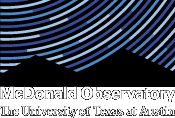McDonald Observatory Will Promote Dark Skies Awareness with Gift from Apache Corporation
FORT DAVIS, TEXAS — A $257,000 gift to The University of Texas at Austin’s McDonald Observatory from Apache Corporation will fund the observatory’s ongoing efforts to preserve the dark West Texas skies that make research possible and provide unsurpassed views of the universe to visitors.

